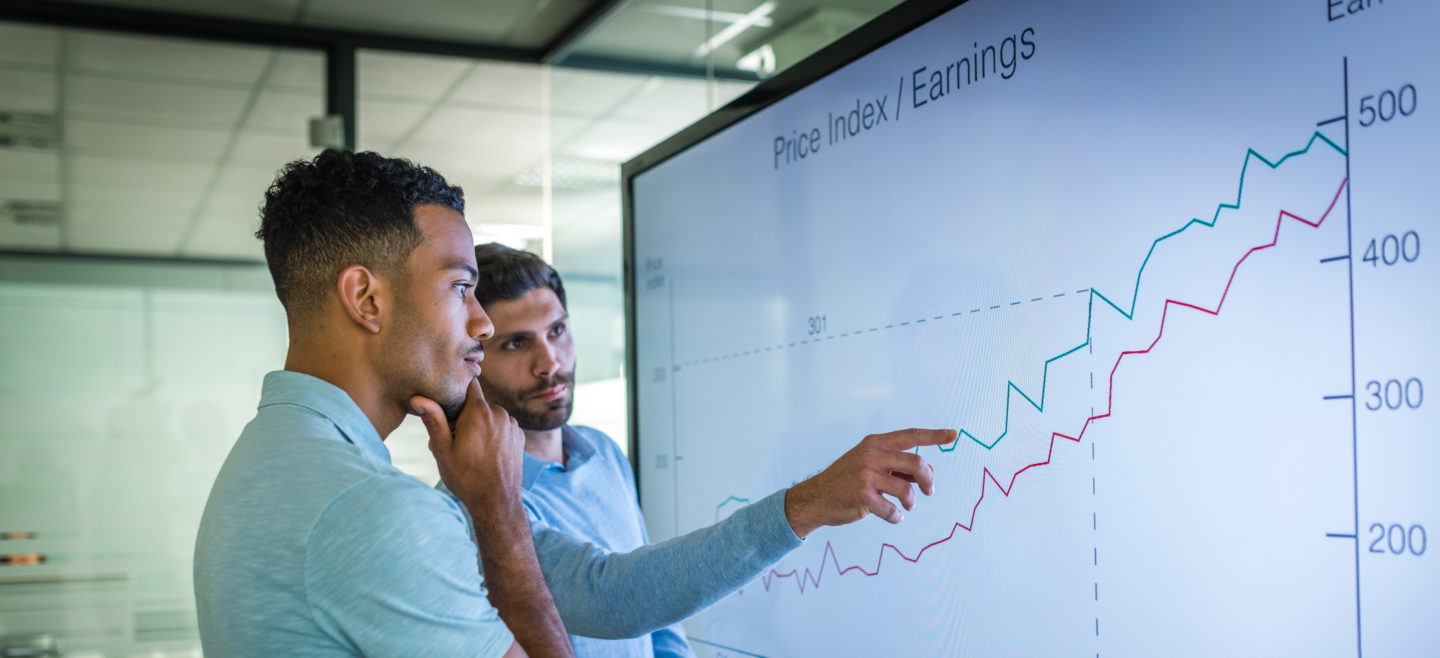
Why supply chain reorganization now tops the CEO’s agenda
Amid mounting geopolitical tensions, CEOs must take direct control of supply chain resilience, says IMD’s Carlos Cordon...

by Bettina Büchel Published 27 July 2021 in Strategy • 4 min read
Imagine a great growth opportunity has just sprung up for your company during the course of the year and outside of the budgeting process. But no funding is available. Alternatively, a cross-functional initiative stalls despite available budget. Why? Because it does not fit neatly within the existing operating model. In a third possible scenario, initiatives progress but they are slow to demonstrate results: frustrating everyone involved.
All of the above are united by a common phenomenon: a discrepancy between the identification of value creating opportunities and existing processes for realizing their potential – the value gap.
Over the last 10 years of disruptive growth in a fast-changing market environment, closing this value gap has become increasingly important. During this time, technology has constantly enabled new strategic possibilities, from creating fresh sources of competitive advantage to creating new business models.
In a context of increasingly volatile political, market and technological changes, the traditional strategic planning and implementation process does not match the speed with which companies need to embrace these changes by making market and technology moves. The fundamental assumption underlying traditional strategic planning approaches is that industry boundaries are relatively stable over longer periods and companies have time to adjust. But the reality is different. For one thing, companies have a shorter lifespan than they used to: a McKinsey study found that the average lifespan of companies listed in Standard & Poor’s 500 changed from 61 years in 1958 to 18 years today. In addition, societal expectations about taking multiple stakeholders into account is also shifting. As a result, the strategic planning process is often too infrequent, takes too long to complete and does not always go beyond shareholder return.
On the value realization side, the technological opportunities that digitalization is creating, the speed at which eco-system partnerships are evolving and the increasing stakeholder demands are leading to implementation challenges. Company operating models are not set up to deal with the number of initiatives that require immediate attention resulting from a short-term opportunities or longer-term transformation initiatives, particularly as the short-term continues to demand management attention and no one feels responsible for the often cross-functional initiatives that go beyond the traditional boundaries of divisional or functional responsibilities.
An agile strategy process involves managing a portfolio of strategic initiatives and evaluating them continuously. Through this process, a company can more quickly accelerate, pause or even abandon particular initiatives; thereby increasing agility and dramatically reducing the odds that money, time and manpower will be drained by initiatives that are going nowhere fast. Continuous governance of cross-functional initiatives also promotes a dialog throughout the year, allowing senior management to acquire a context for each unit’s strategy before launching a strategic review process or starting new initiatives. This replaces the burdensome annual planning cycle with a process that forces a dialog.
Assessing the readiness to transform starts by evaluating the financial, material, human resource and informational requirements and the willingness of engagement by those affected. When evaluating readiness to transform, consider: (1) Commitment readiness – the degree to which leaders throughout the organization will support change, (2) Capacity readiness – the knowledge, experience and resources to facilitate the implementation and (3) Cultural readiness – the degree of alignment between the expected behavioral norms and the current norms.
We recently worked with a fertilizer company, whose strategy transformation required a major shift in operating model. Moving from a 5-10 year horizon of strategic planning to an agile strategy process was a major shift for the company. Strategic sprints determined the allocation of resources. But it did not stop there. Understanding the consequences of the formulated strategy entailed mapping the degree of change, understanding the willingness of leaders to engage and looking at how competencies could be built quickly.
Closing the value gap by not only changing the strategy process but also having conducted a preparedness assessment allowed the organization to map out a journey by working on two pathways simultaneously: first, the strategy approach – prioritizing, sequencing and adjusting activities continuously. And second, the strategic change approach – identifying the appropriate sponsorship model for each of the major strategic initiatives, assessing the risks and obstacles to implementation and customizing the communication and competency building plans.
By moving from an annual to a continuous strategic decision-making process on resource investments at a portfolio level of strategic initiatives, management increases their agility and closes the value gap. This is particularly important for companies in industries where the industry trends, for instance the emergence of new and disruptive technology, require a shift of value creation decision-making from the long-term to a more short-term time horizon.

Professor of Strategy and Organization at IMD
Bettina Büchel has been Professor of Strategy and Organization at IMD since 2000. Her research topics include strategy implementation, new business development, strategic alliances, and change management. She is Program Director of the Strategy Execution and Change Management open programs, as well as teaching on the flagship Orchestrating Winning Performance (OWP) program.

25 April 2024 • by Carlos Cordon in Innovation
Amid mounting geopolitical tensions, CEOs must take direct control of supply chain resilience, says IMD’s Carlos Cordon...

19 April 2024 • by Michael R. Wade in Innovation
The EV pioneer’s once-unrivaled dominance is being tested by declining sales, fierce competition, and questions about its commitment to sustainability and innovation. IMD’s Michael Wade examines Tesla’s strategic direction and leadership. ...

17 April 2024 • by Jim Pulcrano in Innovation
After 25 years of selecting startups to work with IMD’s MBA and EMBA participants, Jim Pulcrano examines the factors that may have helped identify promising young ventures that go on to prosper....

15 April 2024 • by Annabelle Gawer in Innovation
AI-as-a-Service will impact executives and their strategic decisions. It’s crucial to assess the benefits and repercussions it will bring....
 Audio available
Audio availableExplore first person business intelligence from top minds curated for a global executive audience